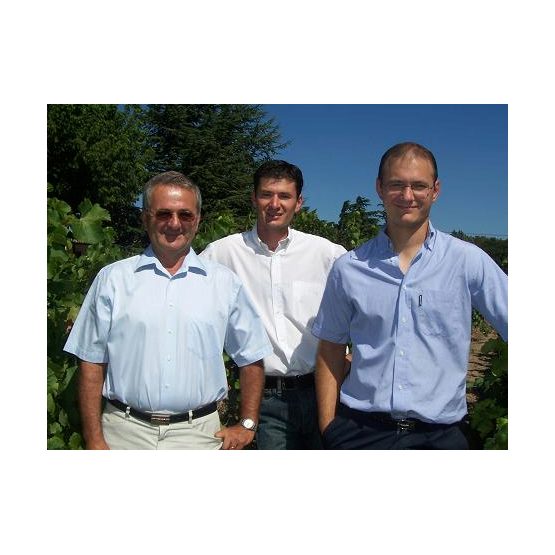
Domaine Grand Veneur
In the Jaume family, the generations have perpetuated the profession of winegrower since Mathieu Jaume decided, in 1826, to grow vines in CHATEAUNEUF DU PAPE. The successions were assumed by Marius, Fernand and Roger.
In 1979, Alain and Odile JAUME carried on the family tradition with the creation of the GRAND VENEUR. At the beginning, the vineyard extended over 22 acres. Over time, the vineyard grew to today's figure of nearly 170 acres spread in the CHÂTEAUNEUF DU PAPE, LIRAC, CÔTES DU RHÔNE VILLAGES "Les Champauvins", and CÔTES DU RHÔNE areas.
In 2003, a new estate of 50 acres was acquired : the "CLOS DE SIXTE" Appellation d'Origine Contrôlée LIRAC. This appellation located few kilometers from Châteauneuf du Pape (in front of it when you cross the RHONE river), is one of the fifteen Crus of the Rhône Valley. However, the soils are unique and they look like the plateaux of Châteauneuf du Pape with sandy-clay earth and the famous rocks that cover the soil. For many years, LIRAC had less reputation than Châteauneuf du Pape, but it is potentially the coming "OUTSIDER" of the Rhone Valley.
Over the years, the family has grown, too. Today, Sébastien and Christophe are gradually taking charge of the management of the estate. Sharing the family know-how, they have to put to maximum advantage their knowledge in wine-growing and wine-tasting.
(image in image files)
Established in the northern part of Châteauneuf du Pape, the Jaume family has been dedicated to the art of wine growing since 1826. Both Grand Veneur and Clos de Sixte vineyards are grown in accordance with certified organic agricultural practices. The hand-picked, low yield, harvest is sorted bunch by bunch. Following a careful maturation, the wines undergo only a light clarification so as to respect the unique terroir characteristics of each wine. A natural sediment deposit may appear, a sign of the richness and vitality of the wine. Usually, each grape variety is fermented separately. The diversity of the grape varieties, and the correspondingly different stages of ripeness of the grapes, obliges us to harvest and ferment each plot of different terroir separately. In this way each variety will preserve its own aromatic identity, its unique character and its distinctive taste.
- http://www.domaine-grand-veneur.com/agl/index.php
- Country:
- France
- Agricultural Standards: Organic